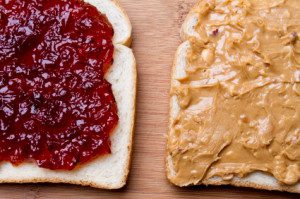The secret to cross-sell
 As more marketers become aware that successful cross-sell requires knowing what products to offer to each individual customer, the question everyone now wants answered is “How do you do that?” If you send out individualized marketing campaigns emphasizing cross-sell, how do you determine what products to offer to each customer that they have not previously purchased?
As more marketers become aware that successful cross-sell requires knowing what products to offer to each individual customer, the question everyone now wants answered is “How do you do that?” If you send out individualized marketing campaigns emphasizing cross-sell, how do you determine what products to offer to each customer that they have not previously purchased?
A key part of the answer, the secret to cross-sell, is to build an affinities table similar to the one shown below.
| Predictor | Affinity | Score | Lift | Bought Both | Bought Predictor Only | Expected Buyers |
|---|---|---|---|---|---|---|
| Video Components | TVs | 25.4% | 2.109 | 5,785 | 4,316 | 1,096 |
| Cell Phone & Accessories | Portable Audio | 25.0% | 1.609 | 2,316 | 1.737 | 434 |
| Other Electronics | Portable Audio | 24.0% | 1.542 | 1,081 | 822 | 197 |
| Kitchen & Dining Room | Small Kitchen Appliances | 20.0% | 3.04 | 6,000 | 4,799 | 960 |
| Xbox 360 | Toys | 9.9% | 2.804 | 1,821 | 1,641 | 162 |
| Tools | Vacuums | 9.3% | 2.861 | 1,467 | 1,330 | 124 |
| Small Kitchen Appliances | Kitchen & Dining Room | 8.1% | 3.04 | 14,805 | 13,604 | 1,102 |
- Score is the conditional probability of buying the affinity product after buying the predictor product.
- Lift represents how many times more likely an affinity product will be purchased by a customer who has bought the predictor product than customers who have not bought the predictor product.
- Number of expected buyers equals score times the number of customers that have bought the predictor only.
An affinities table lists every product in your product set, and many are listed multiple times. For each targeted product (we call it the ‘affinity product’), there are ‘predictor products’: other products in the set whose purchase is an indicator of a future purchase of the affinity product.
Most affinity products have several predictor products, and the most accurate affinities tables consider baskets of predictor products. The simpler table shown here only considers two product combinations, not higher order affinities showing propensities for an affinity product when multiple predictor products are purchased. For each combination of affinity product and predictor product there is a metric (the ‘lift’) showing the relative effectiveness of the predictor product in inducing a sale of the affinity product.
Having an affinities table doesn’t completely solve the cross-sell problem. You still have to match the affinity products to what each customer has already purchased (these now become the predictor products) as part of the process of calculating a cross-sell score for a particular product for a particular customer, but having an affinities table makes that task much easier.
An affinities table also can make your website stronger. When a visitor clicks on a product, consider it the predictor product and use the table to find the corresponding affinity products to present next to the site visitor.
At Loyalty Builders, we consider affinities tables so essential that creating one is an important early step in our customer analytics program for every one of our customers. Don’t handicap your marketing program by not having an affinities table for your product set.